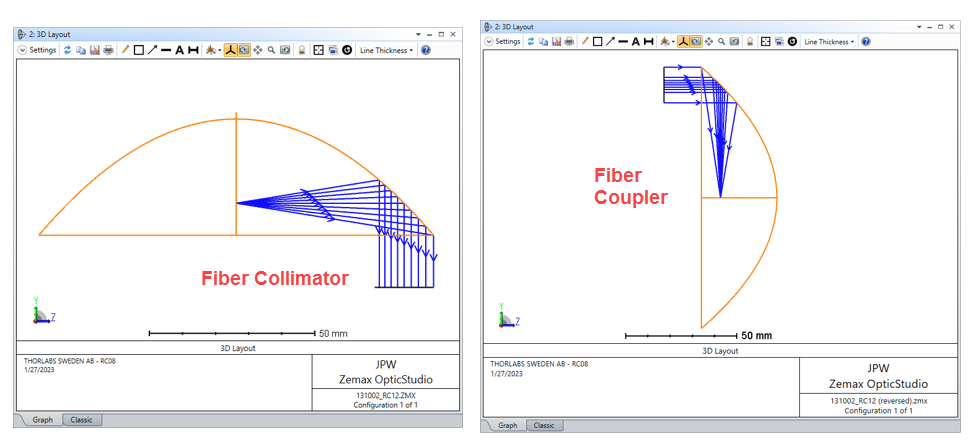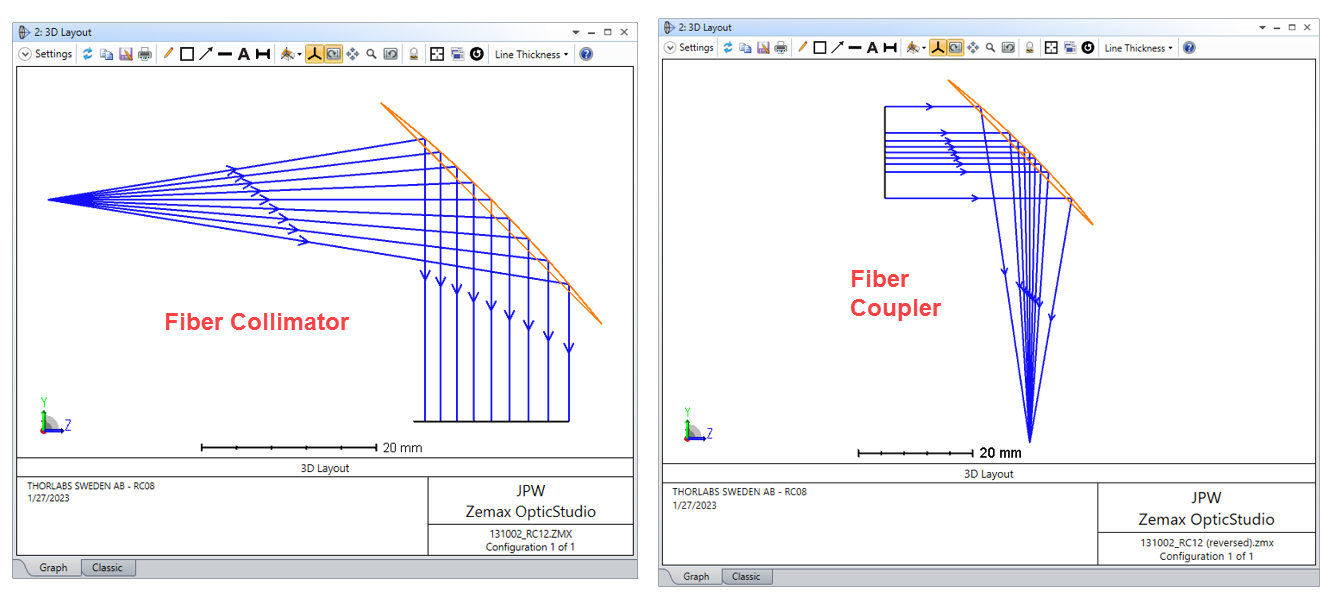Hi Luke,
Welcome to Zemax! You’ve actually picked a rather tricky problem to cut your teeth on. Modeling OAPs in sequential mode is definitely a test of using offset apertures and coordinate breaks (decenters/tilts).
Unfortunately, there is no “easy” way that I’m aware of to reverse the OAP fiber collimator model in order to make it a fiber coupler model. You have to roll up your shelves and make several changes manually, including changing the aperture as well as the orientation of the OAP relative to the starting surface. Here is an article on modeling OAPs that may be helpful:
How to model an off-axis parabolic mirror
A search of the user’s forum will likely produce other helpful posts.
On top of modifying the OAP layout, to add fiber coupling analysis introduces another layer of complexity, as there are various ways to approach the analysis. For example, using rays to find the coupling efficiency (via a Fourier transform of the associated exit-pupil wavefront error, followed by a mode overlap integral) is computationally very efficient, but requires the aperture to be Gaussian apodized without clipping the wings of the Gaussian (assuming you are inputting a collimated Gaussian beam).
I have quite a bit of experience with the software, so to save you some effort I went ahead and made the necessary changes, including incorporation of the coupling analysis using both ray-based and POP-based approaches. However, I would encourage you to try and make the changes yourself, using my model to help if you get stuck.
Regards,
Jeff





